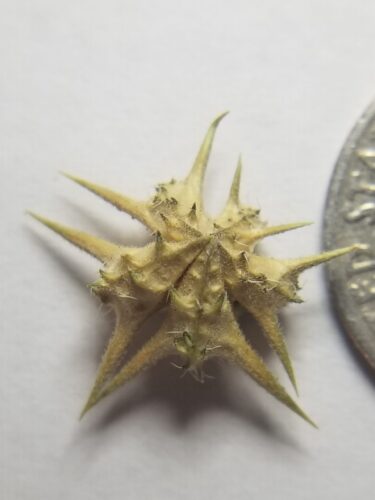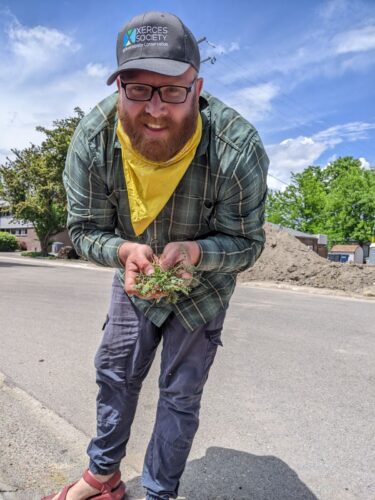
Bike tires, wheelchairs, puppy paws and wallets in the Boise area all feel the sting of the noxious weed, the goathead (Tribulus terrestris). This European weed with deceptively cheerful yellow flowers and spiked fruit traveled overseas on the wool of sheep and livestock in the 1800s, and has run rampant in the dry, sunny open lands of the Treasure Valley ever since. But, as Boise State researchers are discovering, the most economically vulnerable populations in Boise may be feeling the sting the worst.
“Our research shows that the prevalence of this noxious weed that punctures bike tires is higher in areas where property values are lower, and that suggests that poor neighborhoods might be disproportionately impacted by this plant,” Assistant Professor of Biology Trevor Caughlin said. This research is published and publicly accessible online.
With support from Boise’s Weed Warriors program and a grant of more than $56,000 from Boise’s Open Space and Clean Water levy funds, Cauglin, doctoral student Richard Rachman, undergraduate student Teresa Fong and anthropology professor Katie Demps are working to stop goathead spread and the resulting transportation inequity.

Marginalized communities in lower property value neighborhoods are more likely to rely on bicycle transportation for work and school, but also may be less able to afford patching or replacing a bike tire that goatheads cost them.
Caughlin and his team have been creating a heat map of Boise’s goat head populations by tracking 60 miles of paths. With this map, volunteer weed warriors can systematically locate and remove goatheads until their population is gone. This will take time as the seeds of the plant can last in the seedbank for three to six years. The map will be shown to the public at 6 p.m. on June 14 in Liberty Park, Boise.
Richard Rachman, a doctoral student in the Ecology, Evolution and Behavior program, is studying goathead in the Caughlin lab and making the hotspot prediction map.

Rachman is also excited to incorporate community science into this work by using a free, publicly accessible app called iNaturalist. With this app, users can snap photos of the weed, upload them with descriptions and GPS location to Rachman’s project, “Goathead Ain’t Chill,” that will make it easier to track the growth, spread and removal success for the city.
Goatheads are an annual plant, and their leaves track the sun in the same way that sunflowers do. Additionally, they use a special type of photosynthesis called C4 photosynthesis, which makes them very adapted to the hot climates.
To learn how to identify and remove goat heads, check out this guide created by the City of Boise’s Weed Warriors–led by alum Martha Brabec (Biology, MS, 2014).